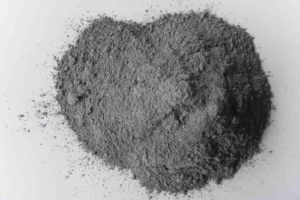Industries use zinc dust in paint manufacturing.
 What is Zinc Dust?
What is Zinc Dust?
Zinc dust is essentially nothing else but minute physical particles of zinc .It is grayish-blue, pure zinc powder. It is manufactured by purifying the vapors of zinc which are then condensed.
SYNONYMS used for zinc dust in paint.
zinc dust, spherical zinc dust, zinc dust (pyrophoric), Zn dust, CAS# 7440-66-6, zinc ashes, merrillite, rheinzink, jasad, blue powder, cinc, zinc, elemental, zincide, zincum, emanay zinc dust, zinc (metallic), zinc anion, zinc preparation, zinc(I) cation
CHEMICAL REACTIVTY
With Water :
- Can evolve gaseous hydrogen in contact with water or damp air.
- The heat of the reaction may be sufficient to ignite the hydrogen produced.
With Air :
- Flammable
- May form an explosive mixture with air.
APPLICATIONS:
Zinc Dust In Paint:
- We know metals like zinc and aluminium do not rust so easily as iron does. Hence it is zinc dust is used in cheap paints and colours to avoid corrosion and rusting of the material on which it is put.
- Zinc painting, commonly referred to by the misnomer “cold galvanizing,” is the application by brush or spray of zinc dust mixed with organic or inorganic binders. Prior to application, the steel must be cleaned by sand blasting to near white metal. The zinc dust must be mixed with a polymeric-containing vehicle and constantly agitated during application to producehomogenous mixture and proper adhesion.
- Zinc-rich paints contain 65-95% metallic zinc in dry film, with 92-95% being common. The paints can be brushed or sprayed on to the steel.
When spray applying, feed lines should be kept as short as possible to prevent settling of zinc dust and uneven film coats.
- Zinc-rich paints are also widely used as primers to high-performance two and three coat systems and for repair of batch hot-dip galvanized coatings.
- In mild environments, inorganic zinc paint may be used independently for corrosion protection, but should be top coated in more severe environments to extend service life.
- Inorganic and organic zinc-rich paints vary somewhat in their performance. Inorganic zinc-rich paints, which adhere to the steel with mild chemical reactivity, have good solvent resistance and can withstand temperature up to about 700 F (375 C). Inorganic zinc-rich paints do not chalk, peel, or blister readily, are easy to weld and provide simpler cleanup than organics. The density of inorganic zinc-rich paints is about half the density of zinc per mil of batch hot-dip galvanized coatings.
- The properties of organic zinc-rich paints depend on the solvent system. Multiple coats may be applied within 24 hours without cracking. Organic zinc-rich paints do not have the same temperature resistance of inorganic zincs, as they are limited to 200-300 F. They are also subject to ultraviolet (sunlight) degradation, and are not as effective as inorganics in corrosion resistance.
- Esaar International Pvt. Ltd. offers Zinc Dust to Paint Manufacturers across the globe. You can click the button below to view our full TDS and place your inquiry:
Other uses
- In Electrometallurgy : We know, that in the Electrochemical or EC Series, Zinc is higher than metals like copper, mercury, iron, etc. Hence it is used to remove the cations of these metals from solutions.
- In Explosives: Zinc dust has a slightly explosive nature. Hence, it is somehow used in cheap explosives
- Batteries : The chemical potential energy in the alkaline batteries for pumping electrical charges between the terminals is due to zinc dust. The dust burns itself up for this purpose and the battery dies when little dust is left.
- Rocket Fuel– Hobbyists also combine it with sulfur to create fuel for rocket models. However, rockets which are powered by zinc dust fuel often have inadequate power and can also explode.
HEALTH & ENVIRONMENTAL HAZARDS
- Produce flammable gases on contact with water. May ignite on contact with water or moist air. Some react vigorously or explosively on contact with water. May be ignited by heat, sparks or flames. May re-ignite after fire is extinguished. Some are transported in highly flammable liquids. Runoff may create fire or explosion hazard.
- Inhalation or contact with vapors, substance or decomposition products may cause severe injury or death. May produce corrosive solutions on contact with water. Fire will produce irritating, corrosive and/or toxic gases. Runoff from fire control may cause pollution.





 What is Zinc Dust?
What is Zinc Dust?
Leave a Reply